Grow Lemongrass at Home and transform your kitchen into a fragrant, flavorful paradise! Have you ever dreamt of snipping fresh lemongrass straight from your garden for your Thai curries or soothing teas? Well, dream no more! This DIY guide will unlock the secrets to successfully cultivating this tropical delight, even if you think you have a black thumb.
Lemongrass, with its vibrant citrusy aroma, has been a staple in Asian cuisine and traditional medicine for centuries. Originating in Southeast Asia, it’s revered not only for its culinary uses but also for its potential health benefits, from aiding digestion to repelling pesky insects. Imagine the satisfaction of knowing you’re growing something that’s both delicious and beneficial!
But why should you bother with growing your own lemongrass? Simple: freshness and convenience! Store-bought lemongrass can often be wilted and lacking in flavor. With this easy DIY trick, you’ll have a constant supply of vibrant, aromatic lemongrass right at your fingertips. Plus, it’s a fantastic way to add a touch of the exotic to your garden or balcony. I’m going to show you how easy it is to grow lemongrass at home, saving you money and ensuring you always have the freshest ingredients for your culinary adventures. Let’s get started!
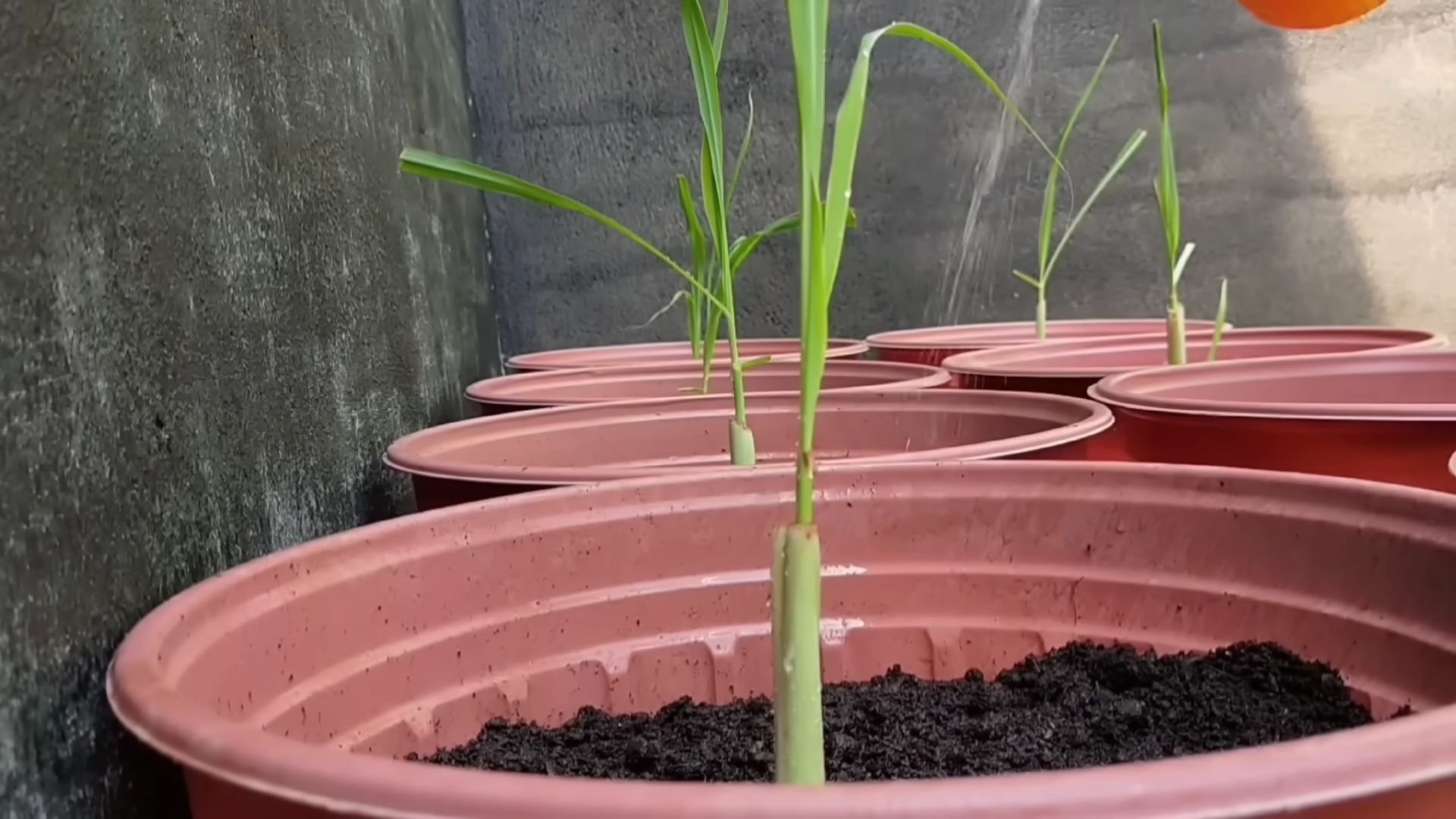
Grow Your Own Lemongrass: A Beginner’s Guide
Hey there, fellow plant enthusiasts! Ever wanted to add that fresh, citrusy zing of lemongrass to your cooking without running to the store every time? Well, you’re in luck! Growing lemongrass at home is surprisingly easy, and I’m here to guide you through the whole process. Trust me, there’s nothing quite like snipping off a stalk of your own homegrown lemongrass for a delicious Thai curry or a soothing cup of tea.
What You’ll Need
Before we dive in, let’s gather our supplies. This is a pretty straightforward project, so you probably have most of these items already.
* Lemongrass Stalks: You can usually find these at your local Asian grocery store or even some well-stocked supermarkets. Look for stalks that are firm, green at the top, and have a small bulb at the bottom. Avoid any that look dried out or mushy.
* A Glass or Jar: Something tall enough to hold the lemongrass stalks upright with a few inches of water covering the base.
* Water: Tap water is fine, but filtered water is even better.
* Potting Soil: A well-draining potting mix is essential. You can use a general-purpose mix or one specifically formulated for herbs.
* A Pot: Choose a pot that’s at least 12 inches in diameter and 12 inches deep. Lemongrass can get pretty big!
* Optional: Rooting Hormone: While not strictly necessary, rooting hormone can help speed up the rooting process.
* A Sunny Spot: Lemongrass loves sunshine!
Section 1: Rooting Your Lemongrass Stalks
This is the most crucial step, as it’s where we encourage those little roots to sprout. Don’t worry, it’s easier than it sounds!
1. Prepare the Stalks: Gently peel off any dry or brown outer layers from the bottom of the lemongrass stalks. This will expose the fresh, green part and encourage root growth. Be careful not to damage the stalk itself.
2. Place in Water: Fill your glass or jar with a few inches of water. Place the lemongrass stalks in the water, bulb-end down. Make sure the water covers the bottom 2-3 inches of the stalks.
3. Find a Sunny Spot: Place the glass or jar in a warm, sunny location. A windowsill that gets plenty of sunlight is ideal.
4. Change the Water Regularly: Change the water every 1-2 days to keep it fresh and prevent bacteria from growing. This is really important for healthy root development.
5. Be Patient: It usually takes about 2-3 weeks for roots to start appearing. You’ll see small, white roots emerging from the bottom of the stalks. Don’t get discouraged if it takes a little longer; just keep changing the water and providing plenty of sunlight.
6. Check for Root Growth: Once the roots are about 1-2 inches long, your lemongrass is ready to be planted in soil!
Section 2: Planting Your Rooted Lemongrass
Now that your lemongrass has roots, it’s time to give it a permanent home in a pot.
1. Prepare the Pot: Fill your pot with well-draining potting soil, leaving about an inch of space at the top.
2. Make a Hole: Dig a hole in the center of the pot that’s large enough to accommodate the roots of your lemongrass stalk.
3. Plant the Lemongrass: Carefully remove the lemongrass stalk from the water and gently place it in the hole. Make sure the roots are spread out and not crammed together.
4. Cover the Roots: Fill the hole with potting soil, gently patting it down around the base of the stalk. You want to make sure the roots are well covered, but don’t bury the stalk too deep. The top of the bulb should be just above the soil line.
5. Water Thoroughly: Water the newly planted lemongrass thoroughly until the water drains out of the bottom of the pot. This will help settle the soil and encourage the roots to establish themselves.
6. Place in a Sunny Location: Return the pot to a sunny location where it will receive at least 6 hours of sunlight per day.
Section 3: Caring for Your Lemongrass
Now that your lemongrass is planted, it’s time to provide it with the care it needs to thrive.
1. Watering: Lemongrass likes consistently moist soil, but it doesn’t like to be waterlogged. Water your lemongrass whenever the top inch of soil feels dry to the touch. During hot weather, you may need to water it more frequently. Make sure your pot has good drainage to prevent root rot.
2. Fertilizing: Feed your lemongrass with a balanced liquid fertilizer every 2-3 weeks during the growing season (spring and summer). This will help it grow strong and healthy. Follow the instructions on the fertilizer label for proper dilution.
3. Sunlight: As I mentioned before, lemongrass loves sunshine! Make sure it gets at least 6 hours of direct sunlight per day. If you live in a particularly hot climate, you may need to provide some afternoon shade to prevent the leaves from scorching.
4. Pruning: You can prune your lemongrass regularly to encourage bushier growth. Simply snip off the top few inches of the leaves with scissors or pruning shears. You can also remove any dead or brown leaves.
5. Overwintering: If you live in a climate with cold winters, you’ll need to bring your lemongrass indoors before the first frost. Lemongrass is not frost-hardy and will die if exposed to freezing temperatures. Place it in a sunny window and water it sparingly during the winter months. You can also cut back the foliage to about 6 inches to conserve energy.
6. Pest Control: Lemongrass is generally pest-resistant, but it can occasionally be affected by aphids or spider mites. If you notice any pests, you can try spraying them with insecticidal soap or neem oil.
Section 4: Harvesting Your Lemongrass
The best part! After all your hard work, it’s time to harvest your homegrown lemongrass.
1. When to Harvest: You can start harvesting lemongrass when the stalks are at least 1/2 inch thick and about 12 inches tall. This usually takes about 3-4 months after planting.
2. How to Harvest: To harvest lemongrass, simply grasp the stalk near the base and twist it gently while pulling upwards. You may need to use a sharp knife to cut through the base of the stalk if it’s particularly tough.
3. Using Your Lemongrass: You can use the entire lemongrass stalk in your cooking. The bulbous base is the most flavorful part and is often used in soups, curries, and stir-fries. The upper part of the stalk can be used to make tea or infused into oils and vinegars.
4. Storing Your Lemongrass: Freshly harvested lemongrass can be stored in the refrigerator for up to 2 weeks. Wrap it in a damp paper towel and place it in a plastic bag. You can also freeze lemongrass for longer storage. Simply chop it into small pieces and freeze it in an airtight container.
Troubleshooting
Even with the best care, you might encounter a few challenges along the way. Here are some common problems and how to fix them:
* Yellowing Leaves: This could be a sign of overwatering, underwatering, or nutrient deficiency. Check the soil moisture and adjust your watering accordingly. If the soil is consistently moist, you may be overwatering. If the soil is dry, you need to water more frequently. You can also try fertilizing your lemongrass with a balanced liquid fertilizer.
* Brown Leaf Tips: This is often caused by dry air or inconsistent watering. Try increasing the humidity around your lemongrass by misting it with water or placing it on a tray filled with pebbles and water. Make sure you’re watering consistently and not letting the soil dry out completely.
* Slow Growth: This could be due to insufficient sunlight, poor soil, or lack of fertilizer. Make sure your lemongrass is getting at least 6 hours of direct sunlight per day. Use a well-draining potting mix and fertilize regularly during the growing season.
* No Root Growth: If your lemongrass stalks aren’t rooting, it could be due to poor water quality or lack of sunlight. Make sure you’re changing the water every 1-2 days and providing plenty of sunlight. You can also try using rooting hormone to speed up the process.
Growing lemongrass at home is a rewarding experience that will add a touch of freshness to your cooking and your garden. With a little patience and care, you’ll be enjoying your own homegrown lemongrass in no time! Happy gardening!
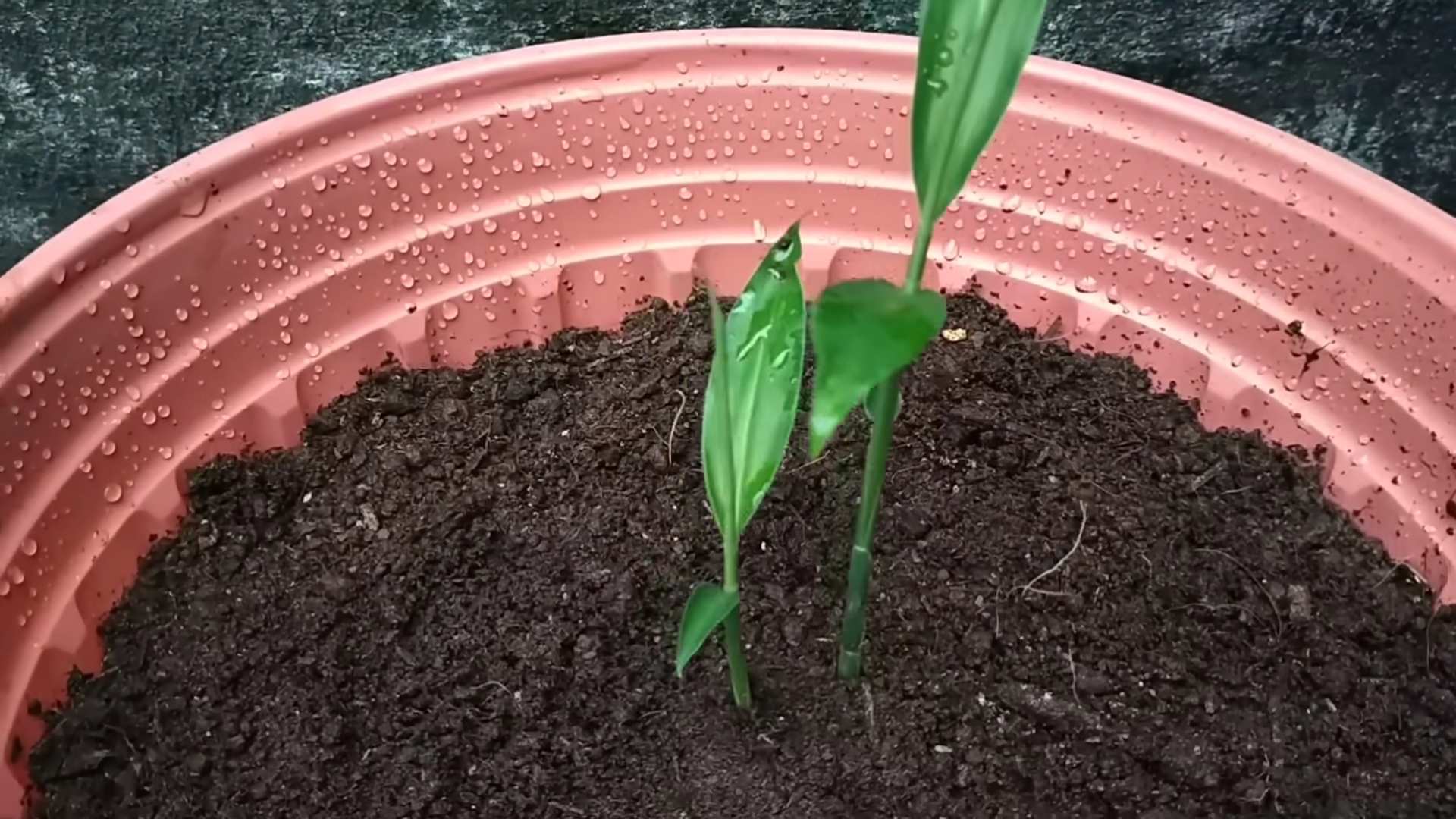
Conclusion
So, there you have it! Growing lemongrass at home is not only achievable, but it’s also incredibly rewarding. Forget those wilted, overpriced stalks at the grocery store. Imagine stepping into your own backyard or onto your balcony and harvesting fresh, fragrant lemongrass whenever you need it. This simple DIY trick transforms a humble grocery store purchase into a thriving, sustainable source of flavor for your culinary adventures.
Why is this a must-try? Because it’s economical, environmentally friendly, and empowers you to control the quality of your ingredients. You’ll save money by avoiding repeated grocery store trips, reduce plastic waste associated with packaged herbs, and enjoy the unparalleled freshness of homegrown lemongrass. Plus, the process itself is surprisingly easy and satisfying. Watching those roots sprout and the stalks grow is a little victory in itself.
But the benefits don’t stop there. Fresh lemongrass is far more potent and flavorful than its dried counterpart. It adds a vibrant citrusy note to soups, curries, teas, and marinades that you simply can’t replicate with store-bought alternatives. And let’s not forget the delightful aroma that fills your kitchen or garden as your lemongrass thrives.
Feeling adventurous? Consider these variations:
* Experiment with different containers: While a simple pot works wonders, you can also try growing lemongrass in raised beds, hydroponic systems, or even repurposed containers like old buckets or tubs.
* Explore different lemongrass varieties: While most grocery store lemongrass is the common variety, you might be able to find other cultivars with slightly different flavors or growth habits.
* Companion planting: Lemongrass is said to deter certain pests, so consider planting it near other herbs or vegetables that could benefit from its presence.
* Lemongrass Tea Garden: Plant lemongrass with other herbs like mint, ginger, and chamomile to create a dedicated tea garden.
Ultimately, growing lemongrass at home is a gateway to a more sustainable and flavorful lifestyle. It’s a small change that can have a big impact on your cooking and your connection to nature.
We wholeheartedly encourage you to give this DIY trick a try. It’s easier than you think, and the rewards are well worth the effort. Don’t be intimidated if you’ve never grown herbs before. Lemongrass is relatively forgiving and thrives with minimal care.
Once you’ve experienced the joy of harvesting your own fresh lemongrass, we’d love to hear about it! Share your experiences, tips, and photos in the comments below. Let’s build a community of home gardeners and inspire others to embrace the magic of growing their own food. What are you waiting for? Get your lemongrass stalks ready and start growing!
Frequently Asked Questions (FAQ)
How long does it take for lemongrass to root in water?
Typically, you should start seeing roots emerge from the base of your lemongrass stalks within 1 to 3 weeks. The exact timeframe depends on factors like water temperature, sunlight exposure, and the overall health of the stalks. Change the water every 2-3 days to keep it fresh and oxygenated, which encourages root growth. Be patient, and don’t give up if you don’t see roots immediately. Sometimes it takes a little longer.
What kind of water should I use to root lemongrass?
Tap water is generally fine for rooting lemongrass, but it’s best to let it sit out for a few hours to allow chlorine to dissipate. Alternatively, you can use filtered water or rainwater. Avoid using distilled water, as it lacks the minerals that can benefit root development.
How much sunlight does lemongrass need?
Lemongrass thrives in full sun, meaning it needs at least 6-8 hours of direct sunlight per day. If you’re growing it indoors, place it near a sunny window or supplement with a grow light. Insufficient sunlight can lead to weak, leggy growth.
When is the best time to plant rooted lemongrass in soil?
Once the roots are about 1-2 inches long, your lemongrass is ready to be planted in soil. The best time to transplant is in the spring or early summer, after the last frost. This gives the plant plenty of time to establish itself before the colder months.
What kind of soil is best for lemongrass?
Lemongrass prefers well-draining soil that is rich in organic matter. A good potting mix amended with compost or aged manure is ideal. Avoid heavy clay soils, as they can retain too much moisture and lead to root rot.
How often should I water lemongrass?
Water lemongrass regularly, especially during hot, dry weather. Keep the soil consistently moist, but not waterlogged. Allow the top inch of soil to dry out slightly between waterings. During the winter months, reduce watering frequency.
How do I fertilize lemongrass?
Feed your lemongrass with a balanced fertilizer every 4-6 weeks during the growing season (spring and summer). You can use a liquid fertilizer diluted to half strength or a slow-release granular fertilizer. Avoid over-fertilizing, as this can lead to excessive foliage growth at the expense of flavor.
How do I harvest lemongrass?
To harvest lemongrass, simply cut off the stalks near the base of the plant. Use a sharp knife or pruning shears. You can harvest individual stalks as needed, or cut back the entire plant to a few inches above the ground. This will encourage new growth.
Can I grow lemongrass indoors year-round?
Yes, you can grow lemongrass indoors year-round, provided you give it enough sunlight and warmth. Place it near a sunny window or use a grow light. Keep the soil consistently moist and fertilize regularly. You may need to repot it into a larger container as it grows.
Is lemongrass a perennial or an annual?
Lemongrass is a perennial in warm climates (USDA zones 9-11). In colder climates, it is typically grown as an annual or overwintered indoors.
How do I overwinter lemongrass in cold climates?
If you live in a cold climate, you can overwinter your lemongrass indoors. Before the first frost, dig up the plant and pot it in a container. Cut back the foliage to a few inches above the soil. Place the container in a cool, bright location, such as a sunny window or a greenhouse. Water sparingly during the winter months, allowing the soil to dry out slightly between waterings. In the spring, after the last frost, you can transplant the lemongrass back into the garden.
Why is my lemongrass turning brown?
Brown leaves on lemongrass can be caused by several factors, including underwatering, overwatering, nutrient deficiencies, or pest infestations. Check the soil moisture and adjust your watering accordingly. Fertilize the plant if it appears to be nutrient deficient. Inspect the leaves for signs of pests, such as aphids or spider mites.
Is lemongrass safe for pets?
Lemongrass is generally considered safe for pets, but it’s best to prevent them from eating large quantities of it. The sharp leaves can cause digestive upset if ingested in excess. Some pets may also be allergic to lemongrass.
Can I use lemongrass for anything besides cooking?
Yes, lemongrass has a variety of other uses. It can be used to make tea, essential oil, and natural insect repellent. It is also used in traditional medicine for its anti-inflammatory and antimicrobial properties.
Where can I find lemongrass stalks to start growing?
You can typically find lemongrass stalks at most Asian grocery stores or well-stocked supermarkets. Look for stalks that are firm, green, and have a bulbous base. Avoid stalks that are wilted, brown, or have signs of mold.

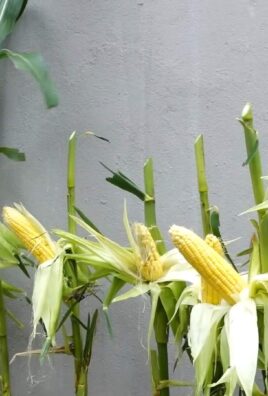
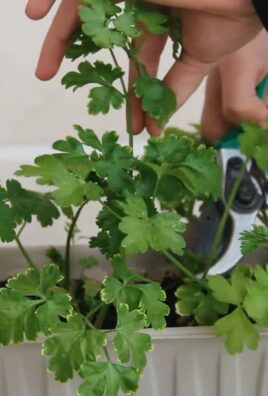
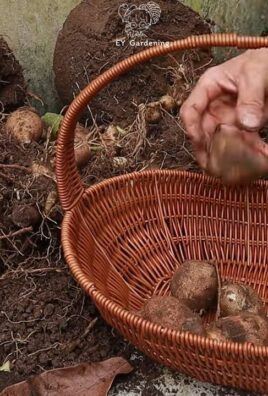
Leave a Comment